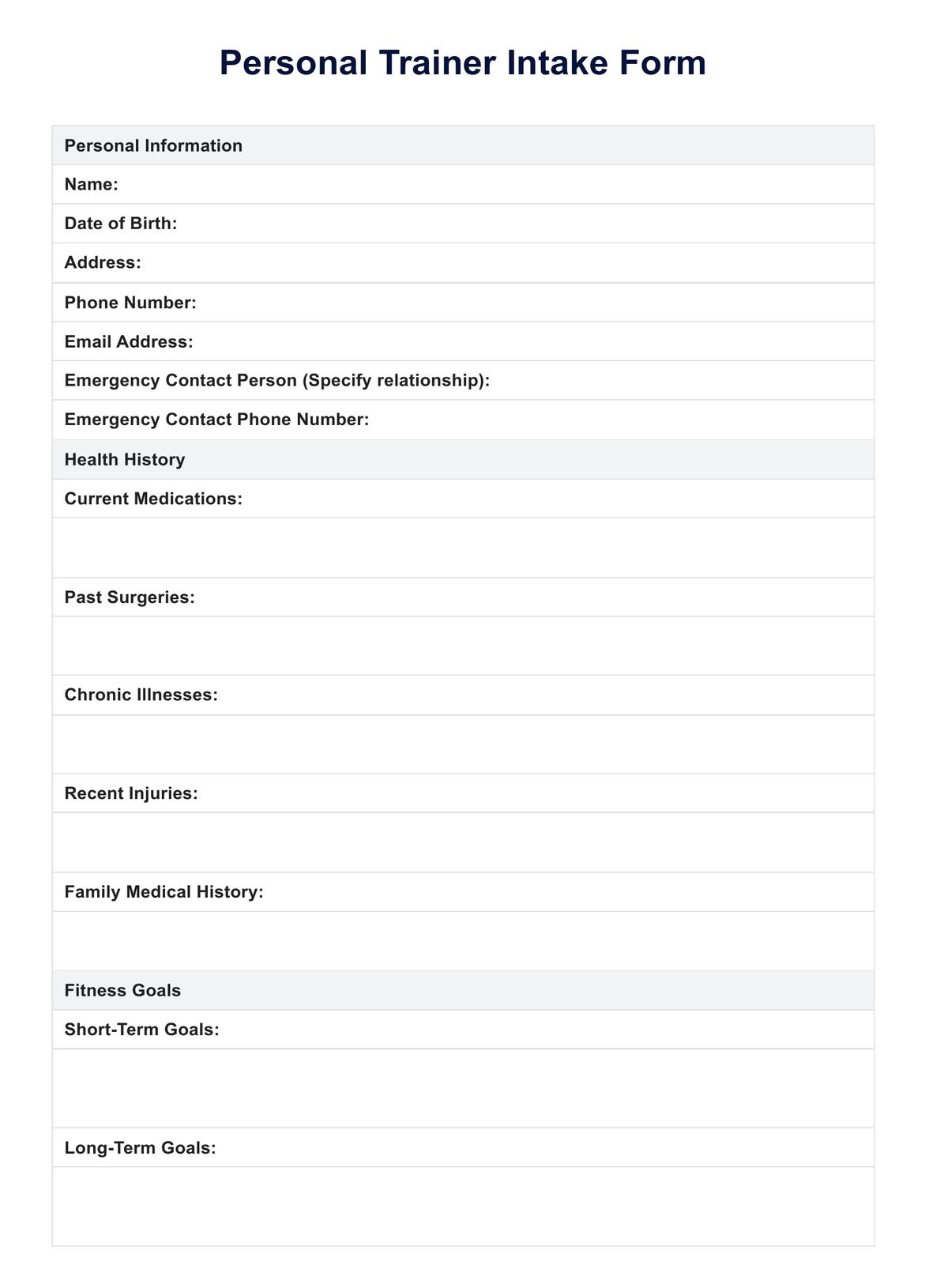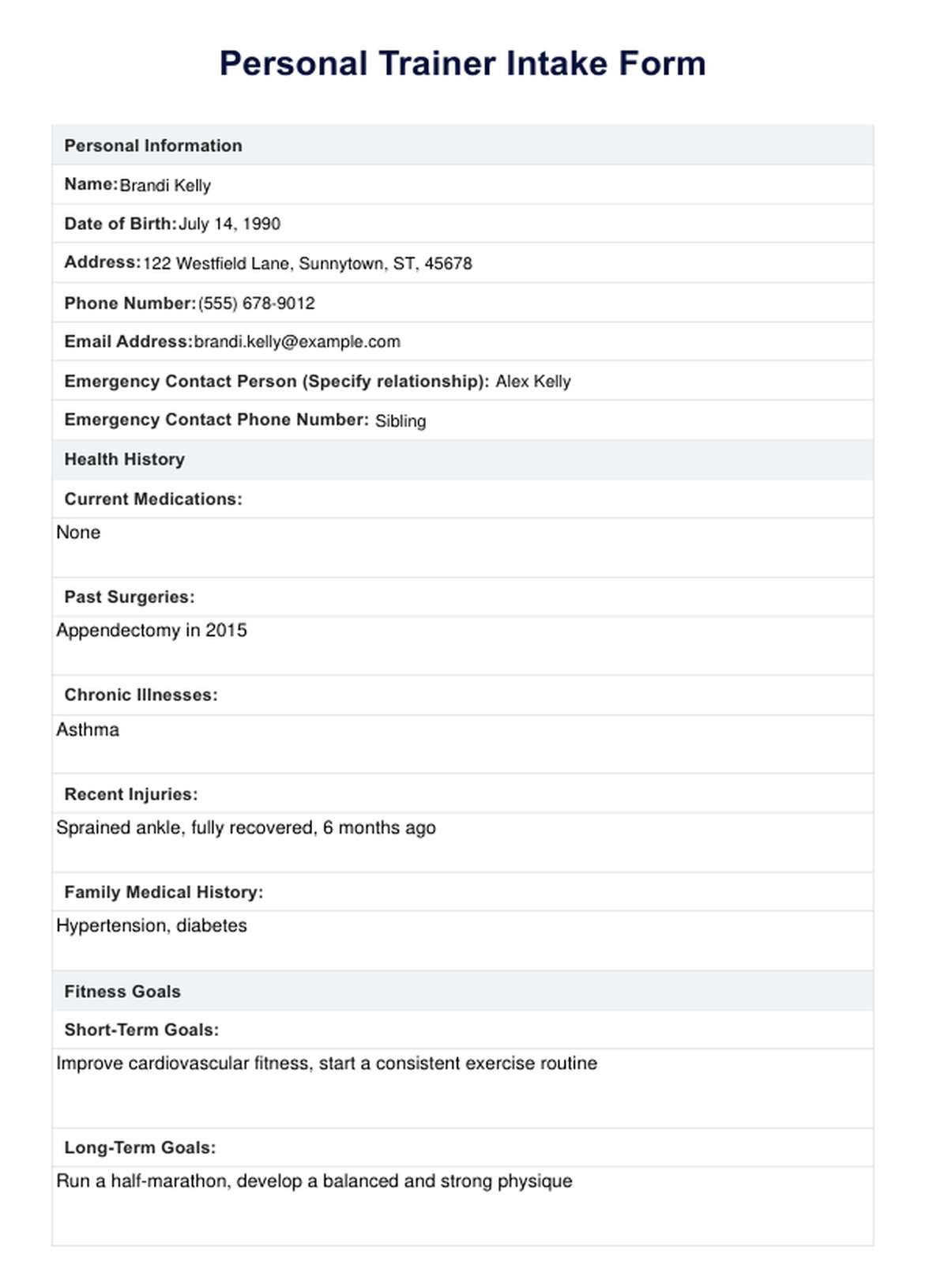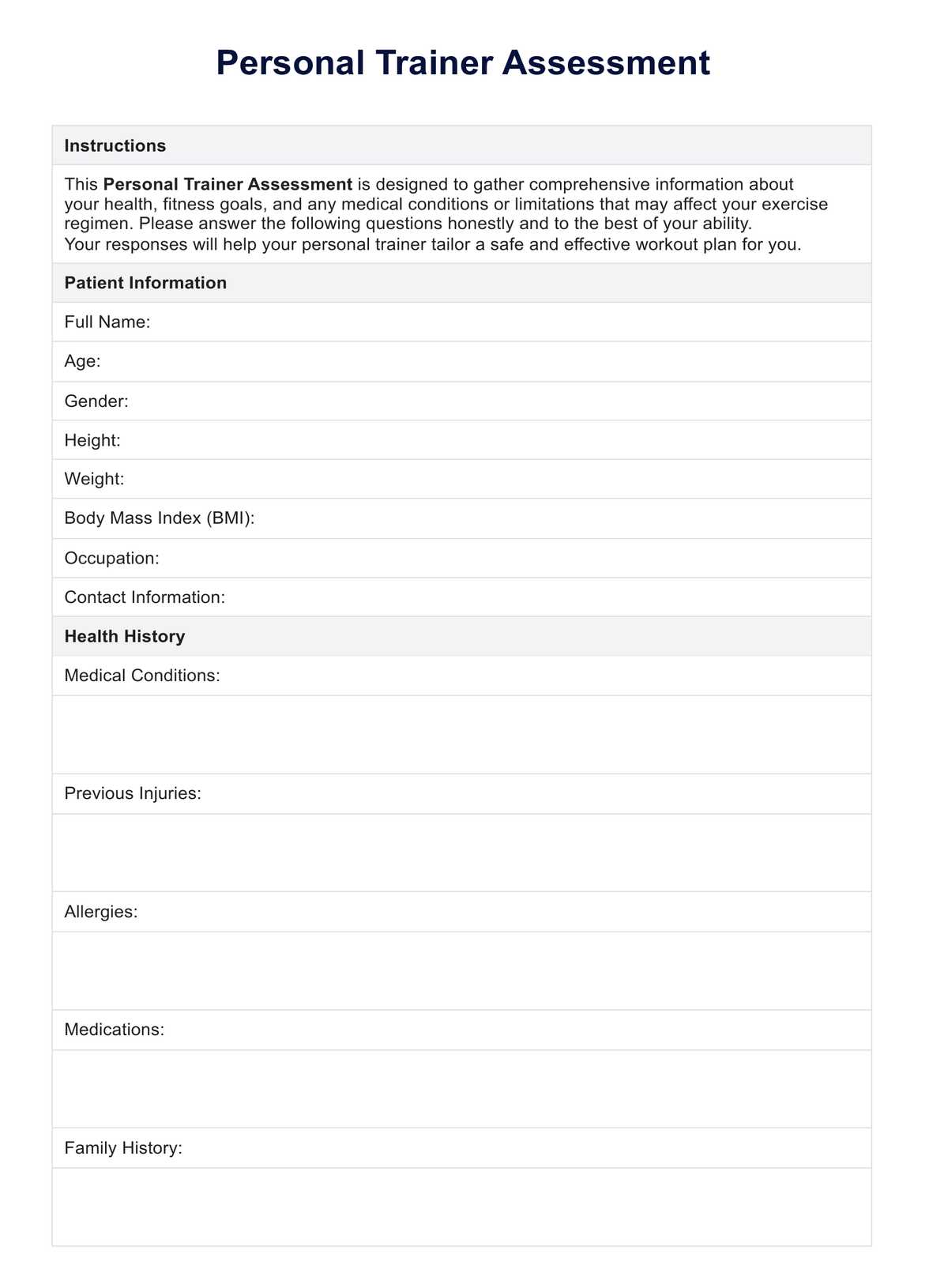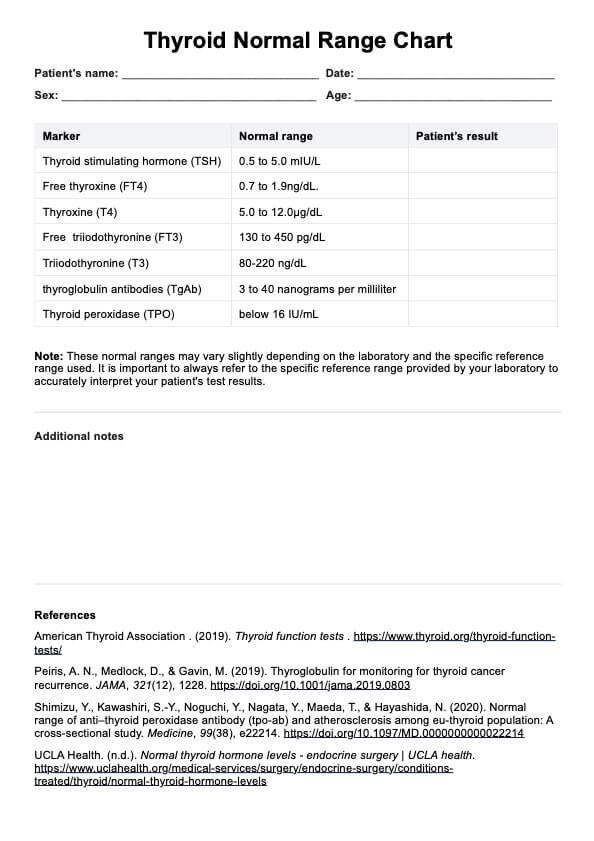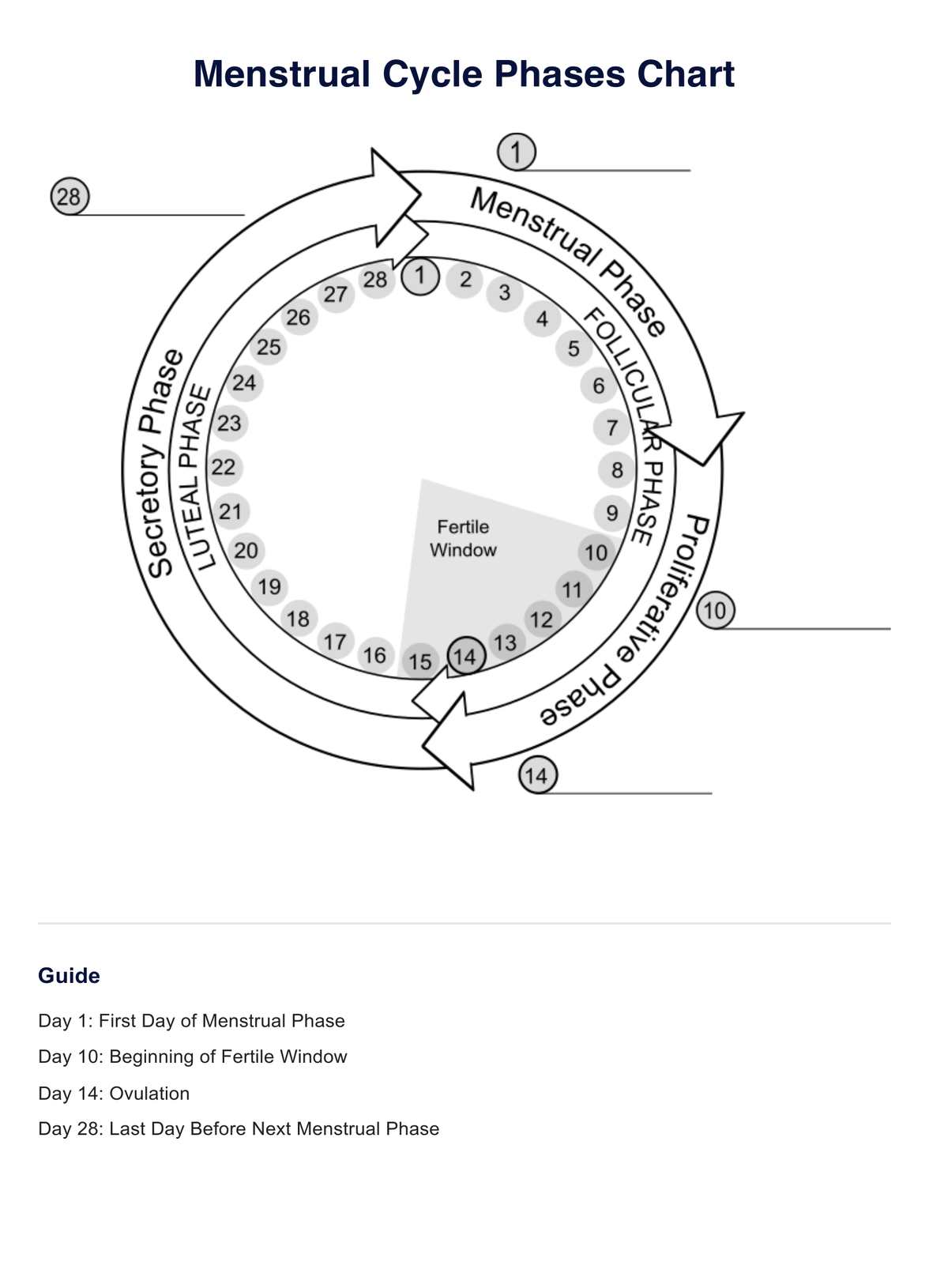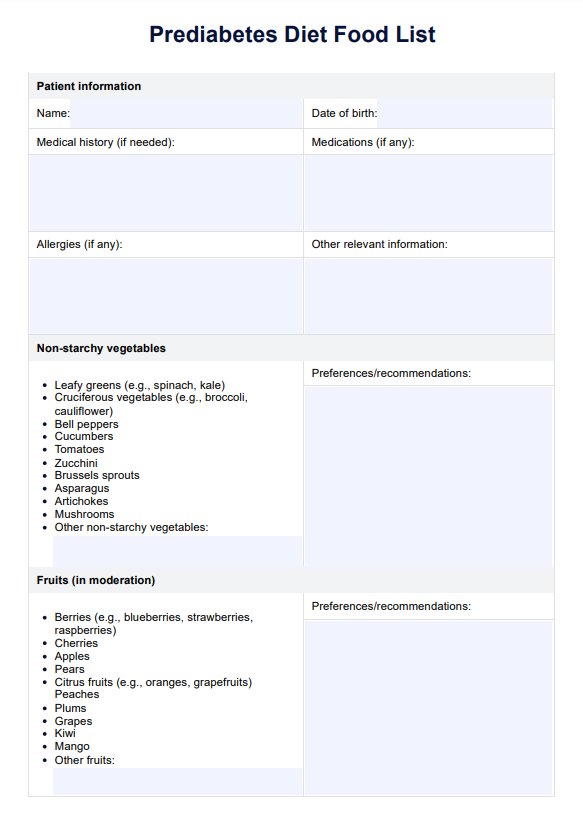Personal Trainer Intake Form
Discover how to create an effective Personal Trainer Intake Form with our comprehensive guide & free PDF example. Streamline your fitness assessments now.


What is a Personal Trainer Intake Form?
Ever wondered how personal trainers tailor each workout session to perfectly match your needs? The secret lies in the meticulous use of personal trainer forms, particularly the Personal Trainer Intake Form.
This essential tool is more than just paperwork; it's the first step toward a customized fitness journey. Personal trainers use these forms to collect patient information, which is crucial for designing a safe and effective training program. These consultation forms are comprehensive, from gathering details about your medical history and emergency contact person to understanding your fitness goals.
They ensure that every aspect of your health and fitness journey is accounted for, enabling personal trainers to create a program that aligns with your unique needs and goals.
Personal Trainer Intake Form Template
Personal Trainer Intake Form Example
Essential components of Personal Training Intake Forms
Personal training intake forms are more than just questionnaires; they are a foundational document that bridges the gap between a client's aspirations and the tailored guidance a fitness professional provides.
The cornerstone of these forms is the client's medical history, ensuring that any personal training regimen considers past injuries, chronic conditions, and other health considerations that could influence their training.
Including form templates that ask detailed questions about a client's physical health, lifestyle, and dietary habits allows trainers to customize workout plans that are effective and safe. This customization is critical, as it aligns the training sessions directly with the client's health status and fitness goals.
Another vital component is the client agreement section, which outlines the terms of engagement between the client and trainer, including session frequency, duration, cancellation policies, and payment details. This clarity sets expectations, fostering a professional and respectful working relationship.
Moreover, consultation forms play a significant role as a tool for initial and ongoing assessments. These forms should evolve to include feedback mechanisms, allowing trainers to adjust training programs based on client progress and satisfaction.
Altogether, these components ensure that personal training intake forms are comprehensive documents that support the customization and effectiveness of the training sessions, ultimately leading to better outcomes for clients.
The importance of Personal Trainer Intake Forms
Personal Trainer Intake Forms play a crucial role in the success of personal training sessions and the overall management of a fitness business. Here are three key reasons why these forms are indispensable:
Tailoring personal training program
Intake forms allow practitioners to gather information about the client's medical history, fitness goals, and fitness level. This data is critical for designing a training program that is effective, safe, and aligned with the client's objectives. By understanding the client's physical condition and aspirations, trainers can create a personalized plan that maximizes results and minimizes the risk of injury.
Enhancing client safety
A thorough review of the client's medical history through the intake form, including PAR Q (Physical Activity Readiness Questionnaire) Forms, is essential for identifying any health concerns that could impact their ability to participate in certain exercises. This precautionary step ensures that all recommended workouts are appropriate for the client's health status, safeguarding their well-being during each training session.
Setting expectations for the first training session
The intake process helps set clear expectations for the trainer and client. It provides an opportunity to discuss goals, answer any queries, and address concerns, ensuring a smooth start to the fitness journey. By having all the necessary information before the first training session, trainers can prepare effectively, and clients can approach their fitness regimen with confidence and clarity.
Crafting fitness plans for new clients
Creating an effective fitness plan for new clients involves a systematic process that begins with gathering information to understand the client's needs, goals, and health status. This foundational step is crucial for personal trainers and fitness businesses offering personalized and safe workout programs.
The initial questionnaire, often integrated into the intake form, is where this process starts. It includes a PAR Q (Physical Activity Readiness Questionnaire), which helps determine whether the client should seek medical advice before starting a new fitness regimen.
Before the first session, new members must sign the intake form, signifying their consent and understanding of the fitness plan's scope and commitment to pursuing their health and fitness goals.
This document should also capture essential knowledge about the client's medical history, allowing trainers to manage potential risks and tailor the workouts to accommodate specific health concerns.
The information completed during the intake process lays the groundwork for a successful partnership between the trainer and the client. It allows the trainer to create a customized fitness plan that empowers clients to achieve their goals from the beginning of their fitness journey. This personalized approach not only enhances client satisfaction and outcomes but also contributes to the long-term success and reputation of the business.
Commonly asked questions
Personal trainers should collect a signed informed consent form, PAR Q (Physical Activity Readiness Questionnaire), medical clearance (if applicable), and a goals assessment document.
Aside from an intake form, personal trainers should use health and fitness assessment forms, progress tracking sheets, nutrition logs, and a client agreement or contract.
To create and edit a personal intake form on Carepatron, navigate to the templates section, select 'Create New Template,' customize your form using the intuitive editor, and save changes. Open your existing form from the templates for editing, make the necessary adjustments, and save.


